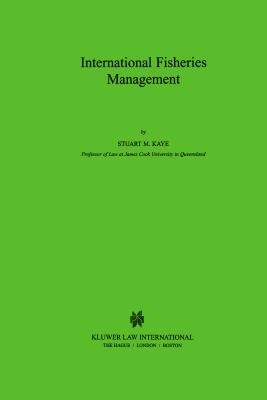
- We will send in 10–14 business days.
- Author: Stuart B Kaye
- Publisher: Kluwer Law International
- Year: 2000
- Pages: 606
- ISBN-10: 9041198202
- ISBN-13: 9789041198204
- Format: 15.6 x 23.4 x 3.5 cm, hardcover
- Language: English
- SAVE -10% with code: EXTRA
Reviews
Description
While the size of the world's fishing catch remains at a constant level, current fishing practices are placing increasing pressure on stocks, and in turn threatening the communities which rely on them. This work examines the role of international law in dealing with this crisis in world fisheries, discussing the principles of marine living resource management found in contemporary international law, and analysing the means by which those principles are implemented. The study is focused around the two principal approaches to fisheries management: the first based upon maximising the yield of particular stocks, and reflected in the content of the 1982 United Nations Convention on the Law of the Sea; and the second founded on the precautionary approach and the associated notion of risk assessment, which encourage taking into account the management of the entire ecosystem. The author explores the legal bases of these different approaches and charts their development in international law. The work makes a comparative analysis of the two systems with reference to two international conventions, operating in analogous polar environments: the Bering Sea `Doughnut Hole' Convention, designed to preserve the pollock stock in the central area of the Bering Sea; and the Convention for the Conservation of Antarctic Marine Living Resources (CCAMLR), designed to manage all the elements of the marine ecosystem of the Southern Ocean. The author concludes with a discussion of the difficulties common to both approaches in the area of compliance, and proposes a number of mechanisms by which the management of stocks could be improved.
EXTRA 10 % discount with code: EXTRA
The promotion ends in 17d.12:06:08
The discount code is valid when purchasing from 10 €. Discounts do not stack.
- Author: Stuart B Kaye
- Publisher: Kluwer Law International
- Year: 2000
- Pages: 606
- ISBN-10: 9041198202
- ISBN-13: 9789041198204
- Format: 15.6 x 23.4 x 3.5 cm, hardcover
- Language: English English
While the size of the world's fishing catch remains at a constant level, current fishing practices are placing increasing pressure on stocks, and in turn threatening the communities which rely on them. This work examines the role of international law in dealing with this crisis in world fisheries, discussing the principles of marine living resource management found in contemporary international law, and analysing the means by which those principles are implemented. The study is focused around the two principal approaches to fisheries management: the first based upon maximising the yield of particular stocks, and reflected in the content of the 1982 United Nations Convention on the Law of the Sea; and the second founded on the precautionary approach and the associated notion of risk assessment, which encourage taking into account the management of the entire ecosystem. The author explores the legal bases of these different approaches and charts their development in international law. The work makes a comparative analysis of the two systems with reference to two international conventions, operating in analogous polar environments: the Bering Sea `Doughnut Hole' Convention, designed to preserve the pollock stock in the central area of the Bering Sea; and the Convention for the Conservation of Antarctic Marine Living Resources (CCAMLR), designed to manage all the elements of the marine ecosystem of the Southern Ocean. The author concludes with a discussion of the difficulties common to both approaches in the area of compliance, and proposes a number of mechanisms by which the management of stocks could be improved.


Reviews